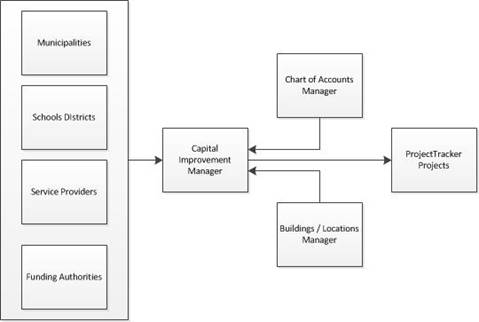Capital
Improvement Manager
As described in Wikipedia, a capital improvement plan (CIP), or capital improvement program, is a
short-range plan, usually four to ten years, which identifies capital projects
and equipment purchases, provides a planning schedule and identifies options for
financing the plan. Essentially, the plan provides a link between a
municipality, school district, parks and recreation department and/or other
local government entity and a comprehensive and strategic plan and the entity's
annual budget.
A CIP provides many benefits including:
• Allows
for a systematic evaluation of all potential projects at the same time.
• The
ability to stabilize debt and consolidate projects to reduce borrowing
costs.
• Serve
as a public relations and economic development tool.
• A
focus on preserving a governmental entity's infrastructure while ensuring the
efficient use of public funds.
• An
opportunity to foster cooperation among departments and an ability to inform
other units of government of the entity's priorities. For example, it is not
uncommon for a large city or county to incorporate into its CIP the capital
needs of a school district, parks and recreation department and/or some other
public service structure.
 The Munetrix Capital Improvement
Manager is a utility to store and analyze the Captial Improvement Plans (CIP)
maintained by the local unit. The CIP is a counterpart to the ProjectTracker.
While the CIP tracks costs associated with a project, the PT tracks the
beginning date, ending date, person responsible, and status of tasks. For more
information about the ProjectTracker see, Project Tracker.
The Munetrix Capital Improvement
Manager is a utility to store and analyze the Captial Improvement Plans (CIP)
maintained by the local unit. The CIP is a counterpart to the ProjectTracker.
While the CIP tracks costs associated with a project, the PT tracks the
beginning date, ending date, person responsible, and status of tasks. For more
information about the ProjectTracker see, Project Tracker.
The CIP is linked to the Chart of Accounts Manager and the
Buildings Manager so project costs can be analyzed by Fund, Department and
Building/Location.

Figure 55: Diagram of the Capital
Improvements Plan data relationships
 The Munetrix Capital Improvement
Manager is a utility to store and analyze the Captial Improvement Plans (CIP)
maintained by the local unit. The CIP is a counterpart to the ProjectTracker.
While the CIP tracks costs associated with a project, the PT tracks the
beginning date, ending date, person responsible, and status of tasks. For more
information about the ProjectTracker see, Project Tracker.
The Munetrix Capital Improvement
Manager is a utility to store and analyze the Captial Improvement Plans (CIP)
maintained by the local unit. The CIP is a counterpart to the ProjectTracker.
While the CIP tracks costs associated with a project, the PT tracks the
beginning date, ending date, person responsible, and status of tasks. For more
information about the ProjectTracker see, Project Tracker.